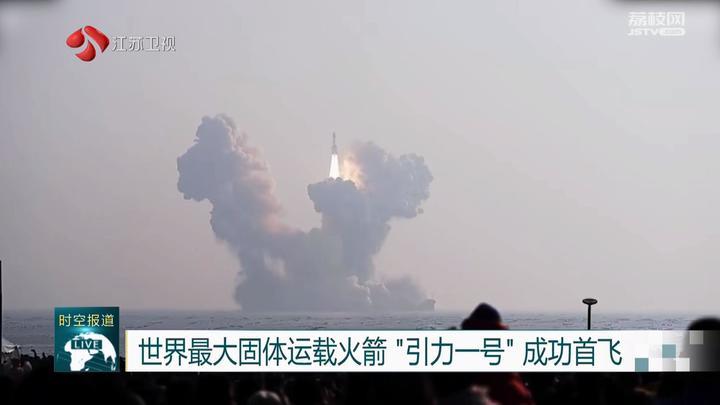World's mightiest solid-fueled rocket makes maiden flight
The Gravity 1 rocket, the world's most powerful solid-propellant launch vehicle, made its debut flight from China on Thursday.

The 30-meter-tall rocket blasted off at 1:30 pm from a launch service ship off the coast of Haiyang in Shandong province and transported three remote-sensing satellites into an orbit about 500 kilometers above the ground.
Developed by Orienspace, a private company in Beijing, the Gravity 1 rocket model consists of three core stages and four boosters, all powered by solid-propellant motors and equipped with flexible swinging nozzles. It has a liftoff weight of 405 metric tons and a liftoff thrust of 600 tons.

The rocket is able to send spacecraft with a combined weight of 6.5 tons to a low-Earth orbit, or 4.2 tons to a typical sun-synchronous orbit at an altitude of 500 kilometers, according to Orienspace, which was founded in 2020 by a group of veteran researchers from State-owned space enterprises.

The specifications of its overall weight and carrying capacity mean that Gravity 1 is now the world's mightiest solid-fueled launch vehicle and is also the most powerful rocket to be developed by a private Chinese company.
In addition, it is the first and only private rocket in China to have side boosters. It also has the biggest fairing, or nose cone — the top structure on a rocket that contains satellites or other payloads — among the country's private rockets.
Gravity 1's successful maiden flight also made Orienspace the fifth private Chinese company to have its own carrier rocket, following i-Space, Galactic Energy, Space Pioneer and LandSpace.
Orienspace said Gravity 1 is an ideal option for deploying large groups of satellites in low- and mid-altitude orbits or sending large spacecraft into space in emergency response scenarios.
The satellites deployed through the launch were built by Changguang Satellite Technology, a State-owned enterprise in Jilin province, and will be operated by Tianjin Yunyao Aerospace Technology for meteorological analysis and forecasting, spatial environmental detection and ground disaster research and prevention.







